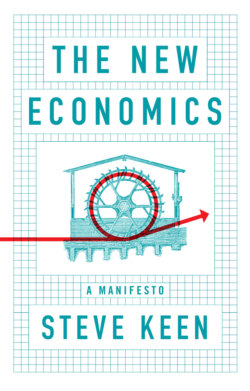Читать книгу The New Economics - Steve Keen - Страница 8
Notes
Оглавление1 1 It is often also called ‘mainstream economics’. There are divisions within Neoclassical economics, especially between self-described ‘New Classicals’ and ‘New Keynesians’. Even more confusingly, some ‘New Keynesians’ claim that they are not ‘Neoclassical’, and in fact use it as a term of abuse towards ‘New Classicals’.
2 2 The campaign was supported by 300 of the registered 1,800 academic economists in France, one-third of whom were economic historians, while the rest were economists.
3 3 The one exception was Robert Shiller, recipient of the Economics Nobel Prize in 2013. But Shiller’s prediction relied not upon a Neoclassical economic model, but on his excellent historical and statistical research, which diverges substantially from mainstream Neoclassical thinking.
4 4 Axel Leijonhufvud’s ‘Life among the Econ’ is a brilliant satire of the discipline of economics. If you haven’t yet read it, put this book down now and do so. As well as giving you a good laugh, it will prepare you for the pompous dismissal that this book will receive from Neoclassical economists.
5 5 This is not to suggest that physics always achieves the resolution implied here, nor that the process is fast or straightforward, as Peter Woit details in his critique of string theory in the book Not Even Wrong (Woit 2006), and on his blog.
6 6 I’m also partial to the arguments of Feyerabend and Lakatos on this topic, but Kuhn’s masterful analysis of the scientific method is the reference to read if you are interested in how science progresses.
7 7 IS-LM stands for ‘Investment-Savings-Liquidity-Money’.
8 8 Hicks abandoned his Neoclassical beliefs in later life, and explained that his misinterpretation of Keynes arose from his Neoclassical model (developed in Hicks 1935) having a time period of a week – a period over which expectations could be assumed to be constant. Keynes, however, worked in terms of years, a period over which expectations were bound to change. This invalidated Hicks’s LM curve, because ‘there is no sense in liquidity, unless expectations are uncertain’ (Hicks 1981, p. 152). He also strongly rejected the use of equilibrium modelling techniques.
9 9 The obsession with equilibrium as a mathematical state of the economy has led to exalting it as desirable as well. Certainly, as I explain in the next chapter, the financial instability of capitalism is a serious weakness. But as Schumpeter argued almost a century ago (Schumpeter 1928), instability is one of the strengths of industrial capitalism, not a weakness: it leads to the innovation and change that is the essential strength of capitalism, compared to other social systems. The fact that the system is out of equilibrium all the time is partly because of, and partly the motivation for, entrepreneurial activity.
10 10 There were and still are Austrian and Marxist Schools of Economics, but the former shares many of the same foundations as Neoclassical economics – dropping primarily the emphasis upon equilibrium – while the latter has fundamental problems of its own that it has never properly resolved (see Keen 1993a, 1993b).
11 11 The other key student leaders of this revolt were Richard Fields and Richard Osborne in 1973, and Mike Brezniak and Rod O’Donnell in 1974–76. Only Rod and I continued on to academic careers.
12 12 In a curious historical parallel, the appointment of the University of Manchester Professor of Economics Bruce Williams as Vice-Chancellor of Sydney University in the late 1960s was pivotal to the outbreak of the dispute at Sydney University.
